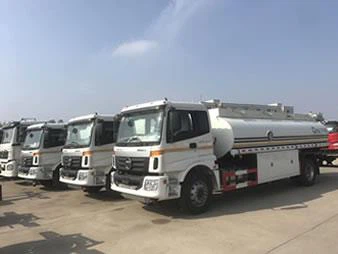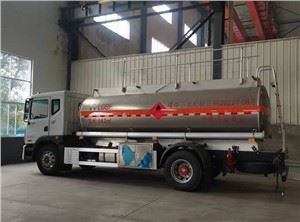Hino L7: A Comprehensive Guide to Features, Benefits, and More

The Hino L7 is a standout model in the world of medium-duty trucks, renowned for its robust performance, durability, and versatility. Whether you’re a fleet manager, small business owner, or simply a truck enthusiast, understanding the ins and outs of the Hino L7 can profoundly inform your purchasing decisions and operational strategies. In this guide, we will explore various aspects of the Hino L7, including its specifications, advantages, and practical applications, ensuring you have all the information you need at your fingertips.
1. Overview of Hino L7
The Hino L7 is part of Hino Motors’ extensive lineup of trucks that cater to various commercial needs. Known for its excellent engine performance and user-friendly features, the L7 serves as a reliable choice for transporting goods across urban and highway settings. It showcases a blend of power, efficiency, and modern technology, making it a worthy investment for businesses.
1.1 Key Specifications
| Specification | Details |
|---|---|
| Engine Type | 4-cylinder turbocharged diesel |
| Horsepower | 210 HP |
| Torque | 440 lb-ft |
| Transmission | 6-speed automatic |
| GVWR | 26,000 lbs |
| Cab Configuration | Standard cab, crew cab options |
2. Engine Performance and Efficiency
The engine is often the heart of any vehicle, and the Hino L7 does not disappoint. With its turbocharged diesel engine, the L7 delivers impressive power while maintaining fuel efficiency. The advanced fuel injection technology ensures that every drop of fuel is utilized effectively, resulting in lower operational costs over time.
2.1 Fuel Economy Insights
Operators have recorded fuel economy averages of around 12-15 mpg. This efficiency not only saves money but also contributes to reduced carbon emissions, aligning with an increasing emphasis on sustainability in the transport industry.
3. Safety Features
Safety is paramount in commercial trucking, and the Hino L7 offers an array of safety features designed to protect the driver and cargo. From advanced braking systems to driver assistance technologies, the L7 prioritizes safe operation on the road.
3.1 Advanced Braking System
The Hino L7 is equipped with an advanced anti-lock braking system (ABS) which enhances braking performance under various conditions. This system can prevent wheel lock-up during sudden stops, which is crucial for maintaining control.
3.2 Driver Assistance Technologies
Features such as lane departure warning and adaptive cruise control significantly enhance the overall safety of the vehicle. These technologies help reduce the risk of accidents, making it easier for drivers to operate the truck in challenging environments.
4. Comfort and Convenience
Long hours on the road require a comfortable driving environment. The Hino L7 is designed with the driver in mind, offering ergonomic seating, ample cabin space, and user-friendly controls.
4.1 Interior Layout and Features
- Spacious cab with ample headroom
- Adjustable, high-back driver’s seat for comfort
- Modern dashboard layout with easy-to-read gauges
- Integrated infotainment system for connectivity
4.2 Storage Solutions
With numerous compartments and storage options, drivers can keep their work essentials organized. The design supports efficient use of space, enhancing overall productivity on the road.
5. Maintenance and Reliability
Maintaining a Hino L7 can be straightforward, and regular maintenance helps ensure longevity and performance. Hino’s commitment to quality and reliability means that the L7 is built to withstand the rigors of daily use.
5.1 Recommended Maintenance Schedule
| Maintenance Task | Frequency |
|---|---|
| Oil Change | Every 5,000 miles |
| Brake Inspection | Every 10,000 miles |
| Tire Rotation | Every 5,000 miles |
| Coolant Check | Every 12,000 miles |
5.2 Common Issues and Solutions
While the Hino L7 is designed for reliability, like any vehicle, it may encounter issues over time. Common problems include:
- Engine performance decline – Regular oil changes can help mitigate this issue.
- Brake wear – Monitoring brake pads and rotors can prevent failures.
6. Versatility in Industries
The Hino L7 is not restricted to a single industry; it serves various sectors, including construction, delivery, and waste management. Its adaptability makes it an excellent choice for businesses looking for a multi-functional truck.
6.1 Usage in Construction
In the construction industry, the Hino L7 can be configured for transporting materials, tool storage, or as a towing vehicle for trailers. Its powerful engine and sturdy design make it suitable for rugged tasks.
6.2 Delivery and Logistics
In logistics, the L7’s fuel efficiency and reliable performance are crucial for timely deliveries and overall operational cost management.
6.3 Waste Management
The Hino L7 is commonly used in waste collection services, where its payload capacity and durability come into play for handling heavy loads in varying conditions.
7. Customer Reviews and Experiences
Customer feedback is critical for gauging the effectiveness of any vehicle. Many Hino L7 owners praise the truck for its performance, especially its fuel economy and reliability. Users report lower than expected operational costs and extended vehicle lifespan with proper maintenance.
7.1 Positive Experiences
- Enhanced fuel savings reported by many fleet operators.
- Drivers appreciate the cabin comfort during long shifts.

7.2 Areas for Improvement
Some customers have mentioned the need for more advanced technology options in the cabin. As technology evolves, the demand for more integrated systems could shape future models.
8. Cost and Financing Options
The price of the Hino L7 can vary based on configuration and additional features. However, overall, it remains a competitive option in the medium-duty truck segment.
8.1 Average Pricing

On average, the cost of a new Hino L7 ranges between $50,000 to $80,000, depending on the specifications. Financing options may be available through various lenders.
8.2 Leasing vs Buying
Businesses should consider their specific needs when deciding to lease or buy. Leasing can provide lower initial costs, while buying may be more cost-effective in the long run for high-use vehicles.
9. Environmental Impact
With growing concerns over climate change and sustainability, the Hino L7’s fuel economy and lower emissions make it a more environmentally friendly choice compared to older models. Hino’s initiative towards greener technology underscores its commitment to reducing the carbon footprint.

9.1 Compliance with Regulations
The Hino L7 complies with current emission regulations, making it suitable for operations in many urban areas where emissions standards are strict.
9.2 Future Developments in Sustainability
Hino Motors has plans for electric models, indicating the brand’s move toward sustainable transportation solutions. Keeping an eye on Hino’s future offerings could provide valuable insights into evolving market trends.
10. FAQ Section
10.1 What is the payload capacity of the Hino L7?
The Hino L7 typically has a payload capacity of around 10,000 – 15,000 lbs, depending on its configuration and body type.
10.2 How does Hino support its customers post-purchase?
Hino provides extensive aftermarket support through service centers, warranties, and a dedicated customer service team to assist with any inquiries.
10.3 Is the Hino L7 suitable for both urban and highway driving?
Yes, the Hino L7 is designed for versatility, making it an ideal choice for both urban environments and long-distance highway travel.
10.4 What type of warranty does Hino offer on the L7?
Hino typically offers a limited warranty covering powertrain and major components, with options for extended service plans available.
10.5 Can I customize the Hino L7?
Yes, the Hino L7 can be customized with various configurations and accessories to meet specific business needs, including body types and additional features.
10.6 How often should I perform maintenance on the Hino L7?
Regular maintenance should be performed according to the recommended schedule, typically every 5,000 miles, or as needed based on usage and operating conditions.
